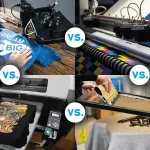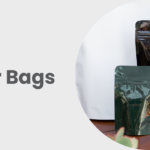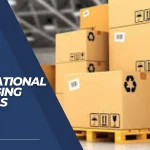Packaging is a very important element of your product. It is the first thing that the consumer sees. So one necessary function of the packaging is to speak to the consumer. Fret not, though, as this can be done with various techniques and designs. There are many different types and styles of packaging that you can use to attract customers. Another very important purpose of packaging is to protect your product. So for the protection of your product and to appeal to the consumer, it is important to choose the right kind of packaging.
The two main types of packaging that you must choose from are rigid packaging and flexible packaging. These packaging types are broader and have many other types categorized within these terms. As the name suggests, rigid packaging has packaging styles that are more firm and inflexible, whereas flexible packaging has styles that are more flexible and elastic. To choose the best type for your products, we must first understand what rigid and flexible packaging are.
Rigid Packaging
Rigid packaging is the most common type of packaging used. In addition, rigid packaging is a type of packaging made of materials that are made to hold their shape. The packaging materials range from containers made of single layers of cardboard to plastic boxes, bottles, and aluminum cans. It is considered rigid packaging unless designed to be easily crushed or deformed.
Benefits of Rigid Packaging
There are certain benefits of every packaging. Rigid packaging also has many benefits. Some of these benefits are;
Protection
The support and protection that rigid packaging provides are like none other. A rigid package can provide excellent impact protection. In addition to the rigidity of the outer packing material, the space inside the package can be filled with foam peanuts or air cushions. This will further cover the product and ensure its safe delivery under many conditions.
Availability
Rigid packaging is one of the most used types of packaging. It has been around for a long time, and its materials have been used for decades. This makes this packaging very easy to make as all the materials and methods required are readily available.
Durable
Rigid packaging is very durable. It is made in such a way as to prevent it from breaking or cracking. This type of packaging is strong and made to survive any impact. This makes it a very reliable type of packaging.
Flexible Packaging
Flexible packaging can be easily molded into shapes, and changes can be made. It uses less material and combines the best properties of the materials used in its preparation. These materials include plastic, film, and paper. Today, it is used worldwide to sell a wide variety of products. Flexible packaging is reusable, resalable, and sustainable. This makes it an amazing option to be used in the long run, saving a lot of money and preserving the item inside.
Benefits of Flexible Packaging
Flexible packaging has various benefits. Some of these benefits are;
Compactness
Flexible packaging allows more space for your products. The same highly efficient use of internal volume that allows better package utilization also allows the use of generally smaller packages. This allows the brand to fit more products in the same shelf space.
Freshness
Flexible packages often include re-sealable zippered lids that keep the product fresh even after opening. This advantage is especially important when selling foods that can spoil when exposed to air and moisture. Flexible packaging allows this function of re-sealing your package once opened, while many other packaging types do not allow this advantage.
Sustainable
Flexible packaging typically requires less material than other types of packaging and wastes less from unused internal volume. There is also flexible packaging made from recycled materials such as kraft paper to help your business contribute to the environment. This makes flexible packaging a more sustainable option.
Key Differences Between Rigid and Flexible Packaging
There are some key differences between these two types of packaging. Some of the characteristics where the differences lie are;
Materials
Rigid packaging uses heavy, strong materials. These materials include cardboard, polycarbonate plastic, glass, and metal. Flexible packaging is generally made from paper and plastic with flexible characteristics, giving the packaging flexibility. The difference in the use of materials allows the two to have different characteristics and pros. The materials used for rigid packaging are the ones that give it the strength and durability that it requires to protect the product inside. On the other hand, the materials used for preparing flexible packaging allow it to keep the products fresh and new.
Durability
A rigid container usually provides better protection for the product inside, as the container provides structure and support. These containers are considered stronger and heavier. However, there are disadvantages, such as breaking the glass and denting cans and bottles if dropped. Flexible packaging, on the other hand, is supposed to be shatterproof, but depending on its structure, it may be pierced by a sharp object. Nevertheless, today’s high-quality flexible packaging offers excellent barrier protection to protect contents from heat, odors, oxygen, and light. This reduces spoilage and results in less food loss.
Weight and Size
When we talk about the weight of the packaging, rigid packaging is heavier than flexible packaging. This is because rigid packages are often made from denser, thicker materials such as cartons, tin cans, glass bottles, etc. On the other hand, flexible packaging uses lightweight materials such as plastic and polypropylene. Package size is based on the requirements of your product. Rigid packages take up more space because they are not made to bend or collapse when bundling. The hard packaging prevents the deformation of contents. Flexible packaging is flat and can be easily bent and bundled to save space. This makes flexible kraft paper or poly envelopes ideal for soft shipping items.
Preservation
Rigid packaging allows food to be well preserved until purchased without having to be opened once. It does not allow the package to be re-sealed after opening. Flexible packaging usually provides a way to preserve freshness once opened. This is because flexible packaging usually comes with a freshness seal or a re-sealable zipper. This allows the food to be preserved for a longer time.
Cost Effectiveness
While rigid packaging is a great option and useful to protect your product, flexible packaging’s lightness and efficient use of space make it more cost-effective as fewer materials are needed for the small space. Rigid packaging is used more, and thus the materials for preparing it are more readily available, but at the same time, flexible packaging requires lower costs for production.
Which One is Better?
Both these types of packaging have their benefits. Different types of products require different types of packaging. You can choose between rigid and flexible packaging depending on your product type. If you want to protect your product, then rigid packaging is the right option. On the other hand, if you want your product to remain fresh for a long time, you should use rigid packaging. So, depending on your product or brand, you can choose the type of packaging that best defines your brand and the product.
So, by understanding the difference between the two and knowing the requirements of your product, you can have the perfect packaging!








